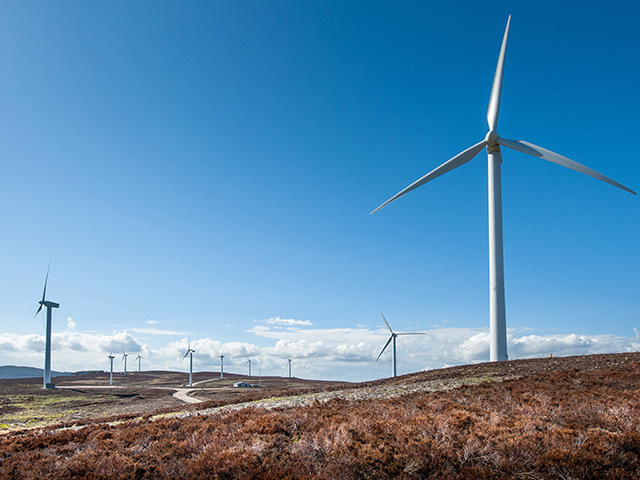
A senior councillor has warned that the Highlands will soon run out of room for windfarms.
But the chairman of the local authority’s planning committee rejected campaigners’ calls for a moratorium on turbine schemes and said that was simply not an option.
Thomas Prag spoke out amid claims green energy development in some parts of the region had reached “saturation point”.
Protesters called for a ban on any new turbines as it emerged German firm ABO Wind UK wants to erect 25 masts at Breakachy near Beauly in Inverness-shire.
The company is working on the proposals with the owners of the Farley, Erchless and Breakachy estates, which own the land.
ABO is also involved in plans for five turbines on the foothills of Ben Wyvis at Woodlands.
The Breakachy application was tabled just three months after the 23-turbine Druim Ba windfarm scheme at nearby Kiltarlity was rejected by the Scottish Government following a high-profile campaign by local residents. Last night, they vowed they would also fight the ABO proposals, expected to be formally lodged with Highland Council next year.
The moratorium call was made by Stuart Young, of Caithness Wind Information Forum, who claimed council planners were being overwhelmed.
There are four applications for 41 turbines for Caithness in the system, plus 17 scoping studies for a maximum of 181 turbines.
They include the Camster II windfarm, which could feature up to 55 turbines.
Mr Young also claimed Highland windfarm operators had been paid almost £20million to stop operations since April 2010 by the National Grid.
He said: “All over the county small or not so small individual turbines appear in an uncontrolled and unco-ordinated manner.
“The windfarm situation in Highland is in crisis. There is an ongoing study to ascertain if Caithness – to be followed by one in Easter Ross – is at wind turbine saturation point, yet more applications are coming forward.
“The study cannot be conducted efficiently unless proposals are halted, now.”
Mr Young said that the council did not have the staff or resources to cope with the “flood of applications”.
Campaigner Lyndsey Ward said: “This development will be fought hard. The community do not want it and the secrecy surrounding it has been disgraceful.”
Councillor Jim Crawford, who represents Inverness South and is an outspoken critic of turbine schemes, said he backed the moratorium call. He added: “We should not be considering windfarm applications until we have complete details of everything that is in the pipeline and where we are going as regards planning and landscape policy.”
But Councillor Thomas Prag, who also represents Inverness South and is the local authority’s planning, environment and development chairman, said a moratorium was not an option.
He added: “If we do not decide applications, it would be deemed a non-determination and it would be taken out of our hands.”
Mr Prag said that the council took cumulative impact into account when deciding windfarm applications.
But he added: “I am quite certain that we will run out of places where windfarms are appropriate. I think developers are already looking at that.”
And the council’s principal planner, David Cowie, said that the Scottish Government’s planning policies made it clear that the council should continue to determine applications while local policies were being updated.
Mr Cowie said: “The Highland Council is mindful of the considerable number of proposals for wind energy development and range of scales, in certain parts of Highland including in Caithness. Our area focus of the landscape study is an acknowledgement of that.”
A Scottish Government spokeswoman said last night: “Where the Scottish Government has already made a decision to consent the construction and operation of a windfarm, planning authorities could seek judicial review of that decision in order to delay or prevent construction, or in the event that the conditions of consent had not been met, planning authorities can take enforcement action to ensure compliance.”
